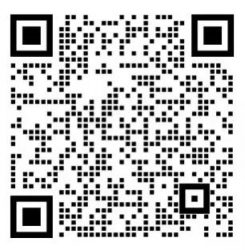本文目录
Google SEO中,如何控制Google爬行和索引你的网站是非常重要的技能。今天和大家分享一下这方面的心得。
对Google爬虫的控制一般有三种方法,分别是
- robots.txt
- robots meta tag
- x-robots-tag
下面分别阐述每一种方法的规定和用法。
1. Robots.txt文件:
Robots.txt文件由user-agent, disallow, allow, sitemap四个属性构成。其中user-agent用来区分不同的group,而disallow和allow是group的元素,sitemap不受group限制,为所有group公用。小型完整中使用的robots.txt文件都很简单,一般不会出错。但如果比较大型的网站的话,robots.txt文件就会比较复杂。这时候最容易产生问题的就是group的优先级以及group元素的优先级。
首先来看group的优先级。对于特定的爬虫,只有一个user-agent会生效。user-agent的特殊性越高,优先级就越高。当一个user-agent对某一个爬虫生效之后,其他的user-agent组将失效。不能与爬虫匹配的user-agent将被忽略。user-agent的顺序与优先级没有关系。下面是一个例子:
user-agent: googlebot-news
(group 1)user-agent: *
(group 2)user-agent: googlebot
(group 3)
| 搜索引擎爬虫 | 生效的group | 注释 |
|---|---|---|
| Googlebot News | (group 1) | user-agent的特殊性越高,优先级就越高 |
| Googlebot (web) | (group 3) | |
| Googlebot Images | (group 3) | 没有专门针对googlebot images的group,所以更一般的group生效 |
| Googlebot News (when crawling images) | (group 1) | These images are crawled for and by Googlebot News, therefore only the Googlebot News group is followed. |
| Otherbot (web) | (group 2) | |
| Otherbot (News) | (group 2) |
再来看group元素的优先级。group元素格式为disallow/allow:url。其中,url必须以“/”开头,代表了url路径从根目录开始。如果没有“/”作为url开始标记的话,爬虫也会假定url从根目录开始。url对大小写敏感。url支持两个正则表达式符号:
- *:代表0个或多个字符。
- $: 标志着url的结束。
下面是个url匹配的例子:
| URL | 能匹配的路径 | 不能匹配的路径 | 注释 |
|---|---|---|---|
| / | any valid URL | Matches the root and any lower level URL | |
/* |
equivalent to / | equivalent to / | Equivalent to “/” — the trailing wildcard is ignored. |
/fish |
/fish /fish.html /fish/salmon.html /fishheads /fishheads/yummy.html /fish.php?id=anything |
/Fish.asp /catfish /?id=fish |
Note the case-sensitive matching. |
/fish* |
/fish /fish.html /fish/salmon.html /fishheads /fishheads/yummy.html /fish.php?id=anything |
/Fish.asp /catfish /?id=fish |
Equivalent to “/fish” — the trailing wildcard is ignored. |
/fish/ |
/fish/ /fish/?id=anything /fish/salmon.htm |
/fish /fish.html /Fish/Salmon.asp |
The trailing slash means this matches anything in this folder. |
fish/ |
equivalent to /fish/ | equivalent to /fish/ | equivalent to /fish/ |
/*.php |
/filename.php /folder/filename.php /folder/filename.php?parameters /folder/any.php.file.html /filename.php/ |
/ (even if it maps to /index.php) /windows.PHP |
|
/*.php$ |
/filename.php /folder/filename.php |
/filename.php?parameters /filename.php/ /filename.php5 /windows.PHP |
|
/fish*.php |
/fish.php /fishheads/catfish.php?parameters |
/Fish.PHP |
对于group元素的优先级和group的优先级类似,特殊性越高,优先级越高。一般来说,长的url优先级高于短的url。下面是个例子:
| URL | allow: | disallow: | Verdict |
|---|---|---|---|
| http://example.com/page | /p |
/ |
allow |
| http://example.com/folder/page | /folder/ |
/folder |
allow |
| http://example.com/page.htm | /page |
/*.htm |
undefined |
| http://example.com/ | /$ |
/ |
allow |
| http://example.com/page.htm | /$ |
/ |
disallow |
2. Robots meta tag,Robots tag标签
Robots meta tag是写在html文件的<head>与</head>之间的,类似于<meta name=”robots” content=”noindex” />的代码,其中name代表搜索引擎爬虫的名字,content代表对此爬虫进行的限制。content允许出现的内容有一下几种:
| Directive | Meaning |
|---|---|
all |
没有限制。如果没有此标签的话,此值为默认值。 |
noindex |
不允许搜索结果页中出现本页,以及不允许出现本页的cache |
nofollow |
nofollow本页的所有链接 |
none |
相当于noindex, nofollow |
noarchive |
在搜索结果页中不允许出现cache |
nosnippet |
在搜索结果页中不出现本页摘要 |
noodp |
不要使用本页在dmoz中的标题和描述作为搜索结果页中本页的标题和描述 |
notranslate |
在搜索结果页中不提供本页的翻译 |
noimageindex |
不允许搜索引擎索引本页的图片 |
对于一个页面中含有多个robots.txt文件的情况,如
<meta name="robots" content="nofollow"> <meta name="googlebot" content="noindex">
一般都比较简单,在此不再阐述。
3. X-Robots-Tag
X-Robots-Tag比较少见,它是在一个html文件的http头文件中出现的一段代码,可以起到和Robots meta tag一样的作用。如
HTTP/1.1 200 OK Date: Tue, 25 May 2010 21:42:43 GMT (…) X-Robots-Tag: noindex (…)
可以让爬虫不要索引本页。当然,它也可以指定爬虫,如“X-Robots-Tag: googlebot: nofollow”。使用X-Robots-Tag最大的好处在于可以通过修改apache服务器的配置来自动产生X-Robots-Tag标签。如果你想修改apache服务器下的所有网站的robots属性,或者希望修改一些无法加tag标签的文件,如pdf,gif,jpg等时,可以采用这种方法。如:将如下代码添加到.htaccess文件或者是httpd.conf文件,可以为apache下所有的pdf文件都加上noindex和noarchive属性。
<Files ~ "\.pdf$"> Header set X-Robots-Tag "noindex, noarchive" </Files>
最后附带一个常见的Google爬虫的列表。当然,Google必然还有其他的爬虫,如用户实时内容抓取的爬虫,用于防作弊的爬虫等等,而这些一般是不公布或经常变换的。
| Crawler | User-agents (+ less-specific alternatives) followed in robots.txt, robots meta tags & X-Robots-Tag | User-agent in HTTP(S) requests | Comments + Documentation URL |
|---|---|---|---|
| Googlebot (web) | Googlebot |
Mozilla/5.0 (compatible; Googlebot/2.1; +http://www.google.com/bot.html) Alternate (rarely used): Googlebot/2.1 (+http://www.google.com/bot.html) |
Generic Googlebot crawler for web-search http://www.google.com/bot.html |
| Googlebot News | Googlebot-News( Googlebot) |
Googlebot-News | For Google News |
| Googlebot Images | Googlebot-Image( Googlebot) |
Googlebot-Image/1.0 | For Image Search |
| Googlebot Video | Googlebot-Video( Googlebot) |
Googlebot-Video/1.0 | For Video Search |
| Googlebot Mobile | Googlebot-Mobile( Googlebot) |
[various mobile device types] (compatible; Googlebot-Mobile/2.1; +http://www.google.com/bot.html) | For Google Mobile web-search results http://www.google.com/support/mobile/bin/answer.py?answer=37425 |
| Google Mobile AdSense | Mediapartners-GoogleMediapartners( Googlebot) |
[various mobile device types] (compatible; Mediapartners-Google/2.1; +http://www.google.com/bot.html) | |
| Google AdSense | Mediapartners-GoogleMediapartners( Googlebot) |
Mediapartners-Google | |
| Google AdsBot landing page quality check | AdsBot-Google(Given the special nature of this crawler, only directives for this user-agent are followed.) |
AdsBot-Google (+http://www.google.com/adsbot.html) | Only visits landing pages used in AdWords campaigns. See http://www.google.com/adsbot.html |
